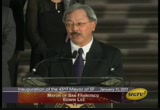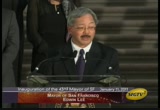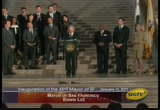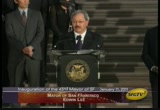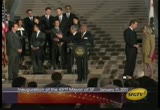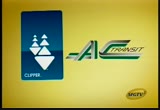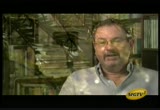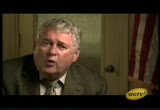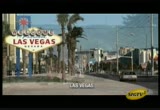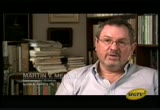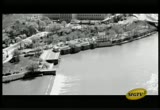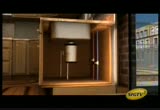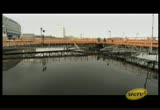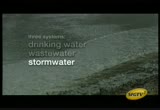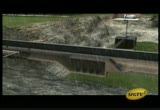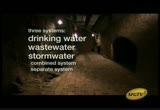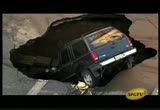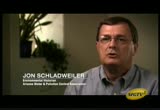tv [untitled] March 17, 2011 11:00pm-11:30pm PDT
11:00 pm
that's quite a journey. but in many ways, this wasn't a whirlwind. it was a journey decades in the making. i spent the past 21 years in and around these hallowed halls , beneath this glorious dome, working to make this city a better place, working for people, working for justice, working to get things done. i believe that i stand before you today not because i was the preferred choice of one side of the aisle or the other, not because i was a safe choice, but because i was the consensus choice, the trusted choice. i believe that if you're able to build trust, if your word is your bond, then it doesn't matter if you're down the hall or 17,000 miles away.
11:01 pm
people know where you're coming from. i was personally gratified by the show of support demonstrated by the board of supervisors moments ago. as well as that shown by your predecessor board last friday. and let me take a moment to thank former supervisors sophie maxwell, evan dufty, and michelangelo alioto-pier for your -- michaela alioto-pier for your support and trust of me. i am grateful and inspired by that show of support. but more importantly, i was inspired by what it portends. a new era of trust. a shared sense of purpose and commitment to this city that we all love. a sense of unity.
11:02 pm
i may be your interim mayor, but i intend to utilize this year and office to tackle our problems with resolve and seriousness of purpose. this is an unprecedented opportunity and perhaps it is just what san francisco needs at this time and in our moment of history. ness an opportunity to come together -- this is an opportunity to come together, to roll up our sleeves and go to work on the significant challenges we all face. for the benefit of all san franciscans. i hope to move us past the labels that have pigeonholed us at city hall or at least to not be bound by them. because if you're a so-called moderate, then i'm a moderate. i've spent the past two decades trying to make this city work, to work for all of us. for its entire history, people
11:03 pm
have flocked to san francisco with their hopes and with their dreams. they've invested in this city, not only with their money but with their sweat and with their blood. i understand that not only do people need to flourish here, but business needs to flourish here. i understand what is at stake. what is invested here in all senses of that word. it's our responsibility to see that this investment isn't squandered. but with all due respect to the talent of many leaders with whom i share this responsibility, i was a progressive before progressive was a political faction in this town. [applause] years ago, years ago, i fought the establishment to make this
11:04 pm
city function better, to make our communities more inclusive. i fought for justice. when i left bolt hall and joined the asian law caucus i sought to integrate the san francisco fire department. i fought to protect the rights of blacks and latinos and gays and lesbians and other marginalized groups. i fought for tenets. i fought for senior citizens. i fought for the powerless. i was part of the city's first whistleblower program. i made sure our domestic partners and minority and women-owned business ordinances were successful. i helped establish our recycling program. now the nation's most
11:05 pm
successful. i ensured equal access to government services for all our citizens, including our immigrants. documented and undocumented. [applause] in other words, i am my own person. [applause] decades ago, i was about as anti-establishment as one could be. today, like you, i am trying to make the establishment work for all san franciscans. and yes, i am quite aware of the significance of being san francisco's first asian-american mayor. as a chinese american, i'm well aware of my community's long and troubled and proud history in this city. the san francisco of old was
11:06 pm
directly involved in racism and neglect. the san francisco that i fought as an attorney began to change. and now today, our struggle is here and it's succeeding. [applause] i am humbled to stand before you today on the shoulders of giants among many flagbearers on the day we moved that history forward. and i'm committed to move all san francisco, all of us, forward. and that is why i've accepted this awesome responsibility. so i hope you will join me. i intend to reach out to you, my colleagues, to my fellow citizens across all political lines and all potential barriers. there are so many talented
11:07 pm
people in this building and in this city. i know we can move san francisco forward together. and in the coming days, i will reach out to every member of the board of supervisors and meet with you personally to discuss my ideas and my agenda. and yes, president chiu, i will sit down with you, shortly, to work out the details of our question-and-answer session. i will seek your advice and counsel as we immediately begin to confront the challenges that lay ahead. starting with tackling our budget deficit and finding a new police chief. to the members of the board, i see you as my esteemed colleagues. and i look forward to a relationship based on mutual respect and trust. to our fellow citizens, i'm not going to change. i'm going to open up that room 200 for everybody, daily, and make sure that you know what that is.
11:08 pm
i present myself to you as a mayor for everyone. a mayor for the neighborhoods, for downtown, for business, for labor, for the powerless, and the powerful. for left, right and everyone in between. for everyone. i will be a mayor who tackles things head on and moves the bar forward. i will be your mayor. thank you very much. [applause]
11:09 pm
>> mayors invite each and every one of you to join him and his family in the south light court for some libations and some enjoyment courtesy of mccall's. so please feel free to wander on over there with your cameras and get your photographs and do whatever you like. but thank you so much for coming.
11:11 pm
all depend upon one basic resource. modern civilization and life itself would be impossible without it. woman: okay, so today, we're going to look at how do we get our water? narrator: and today, it's a matter of simply turning on the tap. so often, we forget about the value of water. water is a commodity that is essential to life. 100 years ago, it would have been hard to imagine turning on the tap water. and now, it's an expectation. narrator: over 300 million people live in the united states. and each person uses an average of 100 gallons of water every day. man: what it takes to actually make clean water is somewhat a mystery to most customers. woman: so how does water get from the river into your house, or here at school?
11:12 pm
woman: somebody has to bring that water to us, and somebody has to take it away when we're finished with it. man: the water infrastructure is vital for disease protection, fire protection, basic sanitation, economic development, and for our quality of life. man: you just can't visualize all the assets that are under our feet. we have about two million miles of pipe in this nation. if you're walking around in an urban area, you're probably stepping on a pipe. man: our grandparents paid for, and put in for the first time, these large distribution systems. woman: and in many cases, it's not been touched since. man: we're at a critical turning point. much of that infrastructure is wearing out.
11:13 pm
narrator: our water infrastructure is made up of complex, underground systems that function continuously. these 10 locations take a look at the history, design, and challenges of our water infrastructure systems. each one represents a small part of what's at stake on a national scale. but understanding the challenges starts with understanding the value of the three basic systems. generations of americans have never experienced living without a constant, unlimited supply of water delivered straight to the tap, or without their waste flushed immediately away. i think people often forget -- because, you know,
11:14 pm
water utilities have made it very convenient for people to get water -- how important this is. man: in terms of water supply, wastewater, stormwater development -- these are independent technologies. but what came first, most often, was a water supply system. the basic system is essentially the same as we used back in the 19th century. and in some cases, some of the same pipes. grusheski: philadelphia was the first american city to develop a water system and to take on as a municipal responsibility water delivery to all of its citizens. when william penn laid out the city, he actually chose a spot of land that had a lot of groundwater. however, by 1730, 30,000 people lived within the first seven blocks of philadelphia,
11:15 pm
next to the delaware river. well, 30,000 people caused filth in the city and polluted their water sources. the groundwater was not potable. and in one year, 1/6 of the population died of yellow fever. now, they didn't know at the time that yellow fever was carried by mosquitoes. but the health issue was major in that first movement to build a water system. narrator: so they set out to find the cleanest source of water. although the majority of philadelphia's water now comes from the delaware river, early engineers found that development along the waterfront was causing pollution. so their search led them to the nearby schuylkill river. philadelphia developed technologies to pump water from the river into the city. these technologies established engineering concepts that are still the basis for our water systems today.
11:16 pm
europeans flocked here. it was a destination point to see the new world technology. when charles dickens visited us in 1840, he was truly blown away by high water pressure on the fourth floor of the hotel he was staying in. nowhere in europe had he experienced that. this technology was doing something to support the life and the growth of the city. philadelphia, throughout the 19th century, was the major industrial city of the united states. all of these industries used water from this system. and it served as a prototype for many american cities, including pittsburgh and new york. man: new york city went to philadelphia and said, "you know, we're thinking of developing a hudson river water supply -- what do you suggest we do?" and they said, "we've had "a lot of problems on the schuylkill. "don't go to the hudson river. go to the upland and work by gravity."
11:17 pm
and that's what new york city did. they first went to the hudson highlands, but 150 years later, it went to the delaware highlands. and really diverted the water that normally went to philadelphia to new york city. i don't think they anticipated that. narrator: the majority of new york city's drinking water comes from watersheds in upstate new york. a watershed is the area of land where water from rain or snow melt drains downhill into a body of water. mountains act as a funnel to feed rivers and lakes. and in this case, reservoirs. in the new york city system, water is collected and stored in 19 reservoirs, which can hold more than a year's supply -- over 580 billion gallons of water.
11:18 pm
almost all of the system is fed by gravity, without the use of energy-consuming pumps. valves open to regulate the flow into the 85-mile-long delaware aqueduct -- the longest tunnel in the world. at hillview reservoir... the water is partitioned into another giant tunnel system. where it travels deep below manhattan. the pressure built up by gravity from the mountains pushes the water upwards toward the surface
11:19 pm
through vertical shafts. these shafts feed the water mains of each neighborhood, which branch into smaller pipes below the streets... feeding into buildings and houses, into the plumbing, and finally, after its long journey, to our faucets. providing water to homes and industry is a monumental task, requiring immense infrastructure. but once the water is delivered and used, it must also be taken away. man: it's important that the waste generated by any society not be left around. cholera, and other diseases and problems, have been spread, because people wound up living in filth.
11:20 pm
even the ancients understood that you couldn't have the sewage where you lived. and the easiest thing to do was transport it to another spot -- by water, or a river. most of the first sewer systems were on the east coast of the united states, often in places that already had developed a citywide water supply system. sullivan: in 1630, boston was basically three mountains, there were very steep hills. waste would run down quickly and dump into the harbor. and the tide would carry most of it away. well, this worked well for a while. the problem was, as boston wanted to expand, it started filling in the mudflats. the water could come rushing down the hill, it would hit the flat area and slow down. at high tide, it couldn't get out at all. it got so bad that the city took over, 'cause the city
11:21 pm
has a responsibility to protect its citizens. boston built the first modern sewer system in the united states. ours was completed between 1877 and 1884. with this wonderful new sewer system, we were taking our filth and moving it out to the ocean. of course, all of this was untreated. in the 1960s, we were still pumping all of our sewage out to moon island, untreated. we would get swimmers here, never knowing, in the middle of summer, why you would have a cold. well, we were swimming in diluted sewage. melosi: the major way to deal with pollution, at least until early into the 20th century, was through the process of dilution. the assumption was that the capacity of rivers and streams, and even the seas, allowed for certain levels of pollution
11:22 pm
that eventually would purify themself. as we get later into the 20th century, it becomes clear that the volumes of waste made dilution unworkable as a single solution. and so treatment became the ways in which we deal with pollution. narrator: to protect public health, starting in the 1950s and '60s, there was a push to put in wastewater treatment plants across the united states. today, with evolving technologies, the waste travels through multiple stages of treatment, removing tons of solids... settling out microscopic particles, and introducing bacteria that consume and decompose the toxic material. in some plants, the water is further disinfected through the use of ultraviolet light or ozonation. these plants cost millions of dollars
11:23 pm
to construct, operate, and maintain. in population centers like los angeles, the scope of the task is staggering. the hyperion wastewater treatment plant serves four million people. it processes 350 million gallons of sewage and removes 500 tons of solids daily. after treatment at hyperion, what was once raw sewage is clean enough to release into santa monica bay. other cities and towns release treated wastewater, or effluent, into local rivers, lakes, and streams. as it flows downstream, additional cities may capture it for drinking water, consume it, and treat the water again. in other words, the water coming out of a wastewater treatment plant often enters the watershed, flows into intakes of drinking water treatment plants,
11:24 pm
and eventually finds its way right back to our faucets. it takes huge investments to ensure that wastewater and drinking water treatment plants function properly to maintain a safe water supply. we made the initial investments in the plants and the pipes. but once we accomplished that, there was this great recognition that we had a series of issues associated with wet weather conditions. storm events where, all of a sudden, you're dealing with a lot of water. narrator: large amounts of rainwater can cause flooding. engineers developed two approaches to stormwater infrastructure to transport water away from the urban environment. one approach was to carry waste and stormwater through the same pipe. this combined system was less expensive than building two individual pipe networks. and stormwater was seen as a way to flush out the sewers. through the 19th century, the combined system
11:25 pm
was considered state-of-the-art throughout the world, and is still in use in many cities today. but cities constructed these systems before treatment was the standard. and even today's largest treatment plant doesn't have the capacity to treat the sudden volumes of water rushing through a combined system during rain. the plant is overloaded, and the excess rainwater, mixed with untreated raw sewage, is diverted straight into local waterways, creating a combined sewer overflow, or cso. there are over 700 communities in the united states with combined sewer systems. the other approach was to separate wastewater from stormwater, using two pipe networks. this separate system simply carries the stormwater away from the city. but even separate systems pollute the watershed. in developed areas, concrete and other impervious services prevent water from naturally soaking into the land.
11:26 pm
as the rainwater moves over the roads and concrete expanse, it captures trash and invisible chemicals, sending them straight to the nearest waterway -- untreated. when engineers first designed america's water infrastructure -- the drinking water, wastewater, and stormwater systems -- they were some of the most advanced in the world. but the infrastructure is growing old. and population growth and development, particularly in urban areas, have made it difficult for original system designs to meet modern health standards and reliably satisfy demand. man: our water and wastewater systems really are engineering marvels. because it's buried, it's invisible to us, and we tend to take it for granted. that's a mistake. like any engineered system,
11:27 pm
it requires maintenance and periodic rehabilitation, and eventual replacement. it's so out of sight and so out of mind, that we don't realize the danger we're in. people see that their roads can cave in. their bridges are falling apart. the concern is that also the infrastructure that they can't see is falling apart. you wouldn't let your house be 100 years old and not ever do any maintenance to it. you would make sure that it was safe. 100 years ago, teddy roosevelt was president, and your pipes were brand new.
11:28 pm
now, our infrastructure is old. 100, 200 years old. it's not been upgraded or fixed or replaced, sometimes, ever. man: if these systems are not maintained, sooner or later they're going to fail. they all have a life expectancy. if you don't maintain them and constantly check them and then do what's necessary to rehabilitate or repair, you're going to have a big problem. and they're going to collapse. they're going to fail. and all of a sudden, the water, or the sewage that normally goes through them, will not have any place to go. it'll back up into homes, it'll back up onto the street. it's normally out of sight, out of mind. once it comes to the surface, it's a whole 'nother animal. melosi: you're talking about system-wide problems that would take tremendous human resources to correct. this is true with drinking water, as well as wastewater. man: first, our top story. thousands of people are without water tonight.
11:29 pm
woman: a flash flood of the manmade kind. apparently, a 12-inch pipe burst. take a look behind me. this water main break shut off water to 2,200 residents. woman: how many breaks are you working on right now? we have 24 breaks working right now. man: in our company, washington suburban sanitary commission, we had 479 water main breaks in february -- the most ever, for any february. man: this 10-inch water main in willard park is 73 years old. man: at wssc, we're having a year of record -- a ramp up slope of water main breaks that soon is going to reach exponential. man: the damage has been done. and this is the culprit. brunhart: today, 25% of our 5,500 miles of underground water pipes has reached the end of useful life. by the year 2020, 85% will have reached the end of useful life. woman: what to do? wssc is working on that costly problem right now. brunhart: it's not only true here, but it's true throughout our nation.
83 Views
IN COLLECTIONS
SFGTV2: San Francisco Government Television Television Archive
Television Archive  Television Archive News Search Service
Television Archive News Search Service 
Uploaded by TV Archive on

 Live Music Archive
Live Music Archive Librivox Free Audio
Librivox Free Audio Metropolitan Museum
Metropolitan Museum Cleveland Museum of Art
Cleveland Museum of Art Internet Arcade
Internet Arcade Console Living Room
Console Living Room Books to Borrow
Books to Borrow Open Library
Open Library TV News
TV News Understanding 9/11
Understanding 9/11